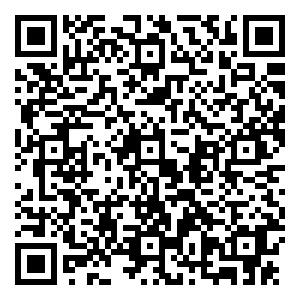|
Ainley D G, Blight L K. 2009. Ecological repercussions of historical fish extraction from the Southern Ocean. Fish and Fisheries, 10(1):13-38
|
|
Alleway H K, Connell S D, Ward T M, et al. 2014. Historical changes in mean trophic level of southern Australian fisheries. Marine and Freshwater Research, 65(10):884-893
|
|
Arancibia H, Neira S. 2005. Long-term changes in the mean trophic level of Central Chile fishery landings. Scientia Marina, 69(2):295-300
|
|
Bhathal B, Pauly D. 2008. ‘Fishing down marine food webs' and spa-tial expansion of coastal fisheries in India, 1950-2000. Fisheries Research, 91(1):26-34
|
|
Branch T A, Watson R, Fulton E A, et al. 2010. The trophic fingerprint of marine fisheries. Nature, 468(7322):431-435
|
|
Butchart S H M, Walpole M, Collen B, et al. 2010. Global biodiversity:indicators of recent declines. Science, 328(5982):1164-1168
|
|
Caddy J F, Csirke J, Garcia S M, et al. 1998. How pervasive is "fishing down marine food webs". Science, 282(5393):1383
|
|
Caddy J F, Rodhouse P G. 1998. Cephalopod and groundfish land-ings:evidence for ecological change in global fisheries. Re-views in Fish Biology and Fisheries, 8(4):431-444
|
|
Coll M, Navarro J, Olson R J, et al. 2013. Assessing the trophic posi-tion and ecological role of squids in marine ecosystems by means of food-web models. Deep Sea Research Part:Topical Studies in Oceanography, 95:21-36
|
|
Cury P M, Shannon L J, Roux J P, et al. 2005. Trophodynamic indicat-ors for an ecosystem approach to fisheries. ICES Journal of Marine Science, 62(3):430-442
|
|
Daskalov G M. 2002. Overfishing drives a trophic cascade in the Black Sea. Marine Ecology Progress Series, 225(1):53-63
|
|
Essington T E, Beaudreau A H, Wiedenmann J. 2006. Fishing through marine food webs. Proceedings of the National Academy of Sci-ences of the United States of America, 103(9):3171-3175
|
|
FAO. 2011. Review of the State of World Marine Fishery Resources. Rome:Food and Agriculture Organization of the United Na-tions, 21-226
|
|
FAO. 2012. The State of World Fisheries and Aquaculture-2012. Rome:Food and Agriculture Organization of the United Na-tions, 60
|
|
Foley C M R. 2013. Management implications of fishing up, down, or through the marine food web. Marine Policy, 37:176-182
|
|
Frank K T, Petrie B, Choi J S, et al. 2005. Trophic cascades in a formerly cod-dominated ecosystem. Science, 308(5728):1621-1623
|
|
Freire K M F, Pauly D. 2010. Fishing down Brazilian marine food webs, with emphasis on the east Brazil large marine ecosystem. Fisheries Research, 105(1):57-62
|
|
Fulton E A, Smith A D M, Punt A E. 2005. Which ecological indicators can robustly detect effects of fishing?. ICES Journal of Marine Science, 62(3):540-551
|
|
Gascuel D. 2005. The trophic-level based model:a theoretical ap-proach of fishing effects on marine ecosystems. Ecological Modelling, 189(3-4):315-332
|
|
Halpern B S, Walbridge S, Selkoe K A, et al. 2008. A global map of hu-man impact on marine ecosystems. Science, 319(5865):948-952
|
|
Halpern B S, Longo C, Hardy D, et al. 2012. An index to assess the health and benefits of the global ocean. Nature, 488(7413):615-620
|
|
Jaureguizar A J, Milessi A C. 2008. Assessing the sources of the fishing down marine food web process in the Argentinean-Uruguayan Common Fishing Zone. Scientia Marina, 72(1):25-36
|
|
Jennings S. 2005. Indicators to support an ecosystem approach to fisheries. Fish and Fisheries, 6(3):212-232
|
|
Kleisner K, Zeller D, Froese R, et al. 2013. Using global catch data for inferences on the world's marine fisheries. Fish and Fisheries, 14(3):293-311<敢湲琾敌物?卺??夠潍甠湁本?????の?????愰猰挹愮搠楆湩杳?敩普晧攠捴瑨獲?潵晧?漠瘨敡牮晤椠獵桰?椠湁杬?浳慫牡楮渠敦?獯祤猠瑷敥浢獳??呃牡敮湡摤獩?楮渠??捵潲汮潡杬礠????癩潳汨略瑲楩潥湳???つ?????????????扮牣?即攬琠栶椶?匲???‰?爭愲渱挱格?呲 ̄???坳慥瑲獴漠湋?剄??至は?ち???汲漠扊愠汈?映楅獳桳敩牮祧?摯敮瘠敔氠潅瀬洠敥湴琠?灬愮琠琲攰爰游献?慒牥敡?摡牬楹癳敥湳?扯祦?灇牵潬晦椠瑯?戠畍瑥?湩潣瑯?瑦物潳灨桥楲捩?汳攠癤敡汴??偬牡潮捤敩敮摧楳渠杣獡?漠晢?琠桭敩?乬慥瑡楤潩湮慧氠??挠慡摳攭浳祥?潳晭?卮捴楳攠湯捦攠獦?潳晨?瑲桩敥?唠湡楮瑤攠摦?即瑨慥瑲敩獥?漠晥??浳敹牳楴捥慭??ㄠぐ?????????????㈠????扎牡?呩慯据潡湬?????????敯瑦椠慓湣????呥畳爠捯桦椠湴楨??????敥瑤?慓汴???びㄠは??剁敭獥灲漭湩獣楡戬氠攱‰愵焨男愩挺甲氷琴田爭攲?愴渴搼?瑲爾潐灡桵楬捹?汄攬瘠敃汨?楩浳灴汥楮捳慥瑮椠潖渮猠?琹漹‵朮氠潐扲慩汭?晲楹猠桰?獯畤灵?灴汩祯??割敥癱極敩睲獥?椠湴??楳獵桳整牡楩敮猠?卬捯楢敡湬挠敦????????????ぴ??扥爬?吳猷椴欨氶椵爱愹猩??‵??′?椷渼潢畲氾楐????吠獄椬爠潃獨?噩?婴??敳瑥?愠汖???ち????呡桲敤??攬搠楥瑴攠牡牬愮渠攱愹渹?愮渠摆??汨慩据歧?卤敯慷?映業獡桲敩牮楥攠獦?慯瑤?牷楥獢歳?映牓潣浩?潮癣敥爬攠砲瀷氹漨椵琳愵琲椩漺游?‰倭?漶匳?佢湲放???ぬ????攠ぃ??????nsen V, Walters C. 2000. Ecopath, Ecosim, and Eco-space as tools for evaluating ecosystem impact of fisheries. ICES Journal of Marine Science, 57(3):697-706
|
|
Pauly D, Palomares M L, Froese R, et al. 2001. Fishing down Cana-dian aquatic food webs. Canadian Journal of Fisheries and Aquatic Sciences, 58(1):51-62
|
|
Pauly D, Christensen V, Guénette S, et al. 2002. Towards sustainabil-ity in world fisheries. Nature, 418(6898):689-695
|
|
Pauly D, Palomares M L. 2005. Fishing down marine food web:it is far more pervasive than we thought. Bulletin of Marine Science, 76(2):197-211
|
|
Pauly D, Watson R. 2005. Background and interpretation of the ‘Mar-ine Trophic Index' as a measure of biodiversity. Philosophical Transactions of the Royal Society B:Biological Sciences, 360(1454):415-423
|
|
Pecl G T, Jackson G D. 2008. The potential impacts of climate change on inshore squid:biology, ecology and fisheries. Reviews in Fish Biology and Fisheries, 18(4):373-385
|
|
Pinsky M L, Jensen O P, Ricard D, et al. 2011. Unexpected patterns of fisheries collapse in the world's oceans. Proceedings of the Na-tional Academy of Sciences of the United States of America, 108(20):8317-8322
|
|
Rochet M J, Trenkel V M. 2003. Which community indicators can measure the impact of fishing? A review and proposals. Cana-dian Journal of Fisheries and Aquatic Sciences, 60(1):86-99
|
|
Scheffer M, Carp
|

 点击查看大图
点击查看大图



 下载:
下载:

